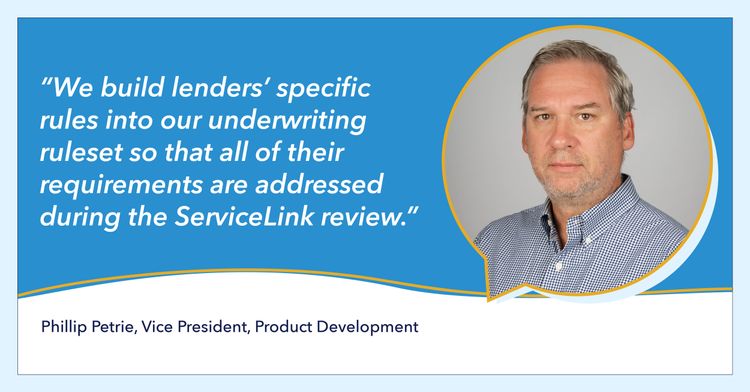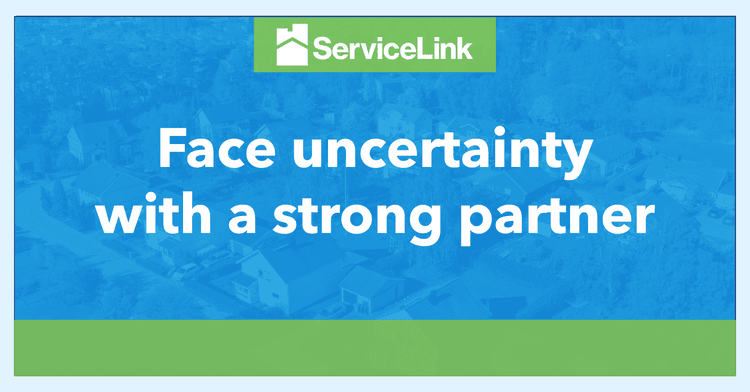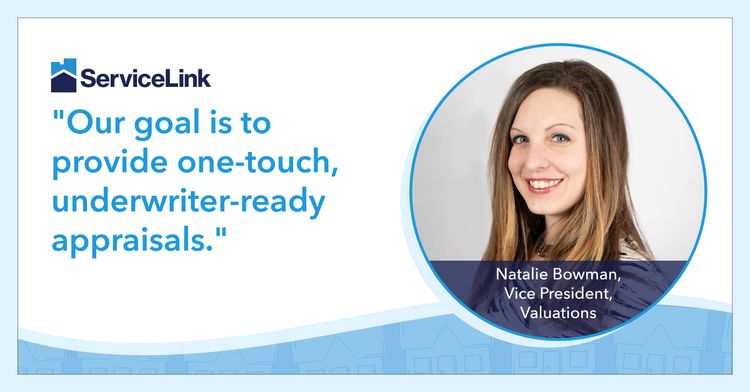Now the norm across the mortgage industry, automated data aggregation was just a starting point for digitizing the title decisioning and commitment process. Automated data aggregation enables ServiceLink to segment their volume into distinct buckets, based on title complexity. A majority of loan files quality for instant title, which means that the lender receives the title commitment immediately. ServiceLink has infused automation throughout the title process to reduce cycle times by days and minimize the potential for human error.
How does automated title review work?
“We build lenders’ specific rules into our underwriting ruleset so that all of their requirements are addressed during the ServiceLink review,” explains Phillip Petrie, vice president of product development at ServiceLink. “We run the aggregated data through that ruleset, which includes state and county requirements, and then formulate the B1s (requirements) and B2s (exceptions) of the commitment.”
ServiceLink delivers title as data (TAD) to lenders, as opposed to giving them PDFs. This eliminates the potential for human error in rekeying Schedule A data — property ownership, legal description, parcel number or tax ID, prior owner, etc. — which often results in delays. Ownership information can flow directly to the closing documents so it matches the title exactly.
What is the impact of automating the title review process?
“As an example, some of our lender partners were experiencing greater than a 70% error rate when their employees were manually keying vested owners’ names into FHA Connection. Each error could cause a delay of three to five days for the associated file,” Jim Gladden, senior vice president of origination strategy at ServiceLink, shares. “Our lender partners who receive our title information as data now have automated the flow of data into the portal and are seeing error rates of less than 2% — a significant improvement and a testament to the potential for not only vast improvements in data quality and integrity, but also extraordinary time savings. One of our partners was able to reallocate an offshore team that had been rekeying information from title commitments into their system.”
As Schedule B is concerned, lien and exception information can also be sent to the lender as data. “We would expect over 50% of the files to match all the data points in the lender’s LOS system, and thus not require a further manual title review by the lender’s title review team. With this ability to eliminate the lender’s need for resources to perform a ‘stare and compare’ of the title, and instead focus on credit and collateral concerns, a lender can reduce what would have been an hour-long process to five minutes,” Gladden says.
Lenders can be confident in the clear-to-close commitment because validation is built right in, as evidenced by the data provided by ServiceLink. It provides evidence that any open liens or judgments against the property have been reviewed and cleared, and that the file is ready to close. That validation removes the onus on the lender to review those details and moves them to the closing table faster.
“Automation has enabled us to produce a commitment in as little as minutes, and then send all of that as data to the lender. It also facilitates our curative processes so we can clear files quickly. Where instant title is possible, we can go from title production to a clear-to-close commitment instantly, which can enable lenders to then present our digital closing scheduling solution to their borrowers technically as soon as day 2 of the process. They may be able to schedule closing for as early as 7 - 10 days from application,” Gladden says.
The solution Gladden refers to is ServiceLink’s EXOS® Close, an easy-to-use digital experience that enables borrowers to schedule their closing for the exact date, time and location of their choice. EXOS Close provides real-time access to local signing agents’ digital calendars. Borrowers, closers or processors simply select the exact date, time and location convenient for them and instantly receive their signing agent’s information, including their name, contact information, photo and make and model of their vehicle. Combining that experience with the automation infused throughout the title can reduce origination timelines by days.
“This isn’t just the future of the mortgage industry; this is available today at no additional cost to our lender partners. It’s truly a competitive advantage,” says Gladden.
Looking beyond title: how can lenders automate quality control reviews for valuations?
Appraisal reviews have traditionally required lenders to have a team of underwriters in place for the time-consuming task of poring over data to ensure accuracy and completeness – but ServiceLink has modernized that process. ServiceLink utilizes an automated platform built to accommodate customized rule and data sets can save a lender that expense, while also getting borrowers to the closing table much more quickly.
“We can lift much of the burden from the lender by partnering with them to share their collateral underwriting requirements. We can build an underwriting platform that replicates their ruleset and collateral underwriting process. If we need to adjust or modify as we go, we’ll do that. If we need to add new data or leverage different data as part of the review process, we’ll do that as well,” explains Matt Woodhouse, managing director of valuations at ServiceLink.
Learn more about that process here.


